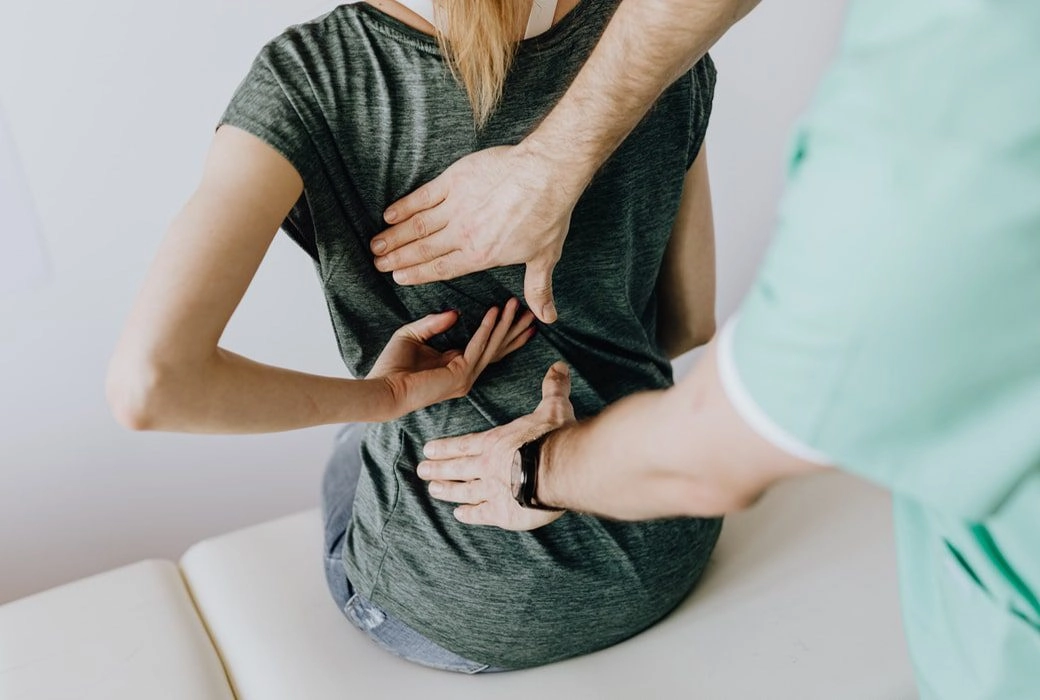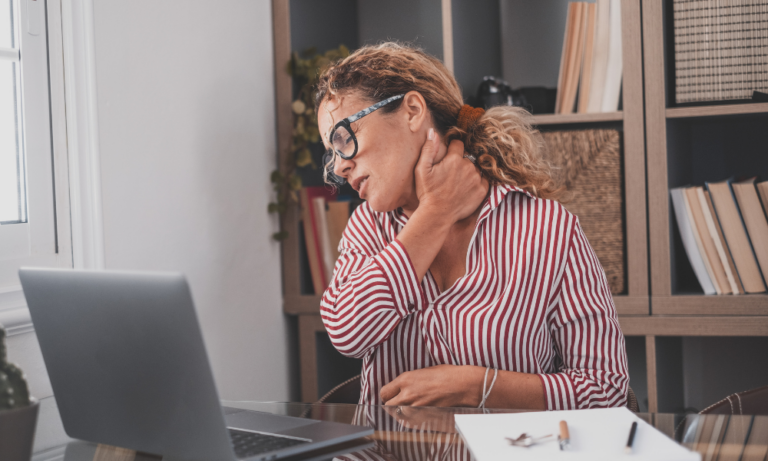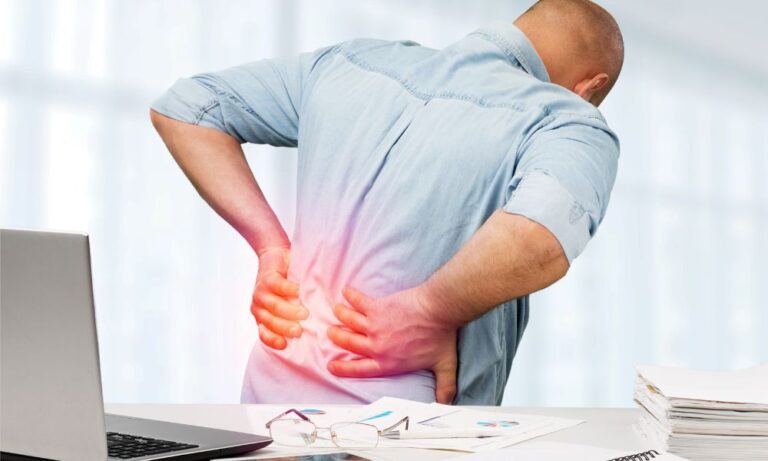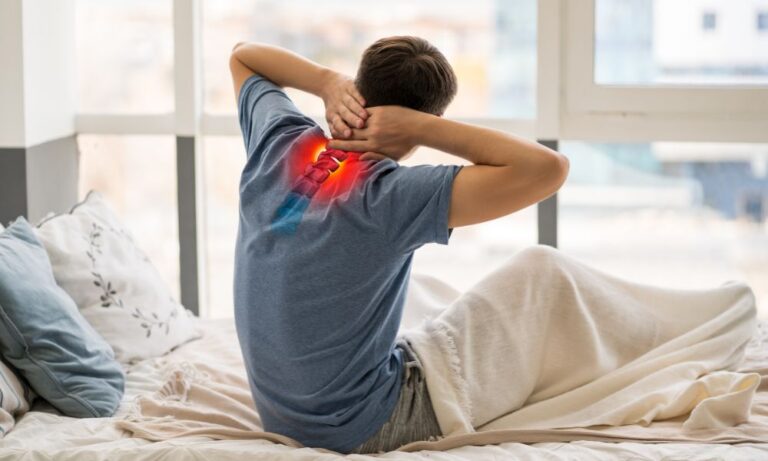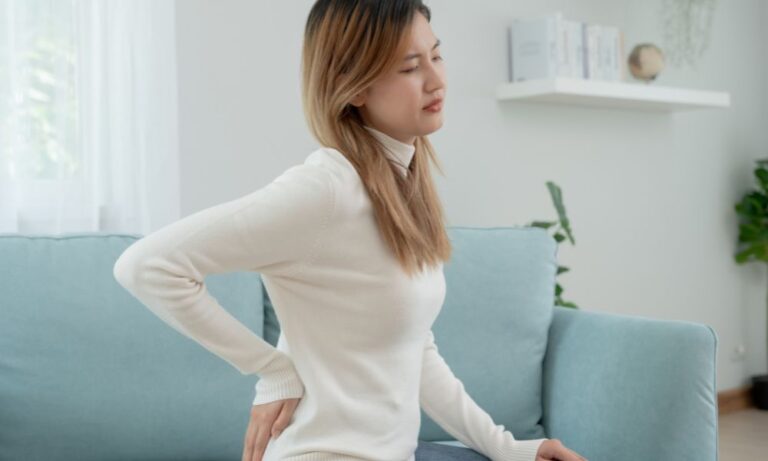Whether you’re dealing with adult scoliosis or you have a child that is showing a lateral curvature of the spine, scoliosis can be scary. Many physicians take the “wait and watch” approach for children, but there are risks to this approach. There are better ways to deal with scoliosis. That’s why we want to share with you five natural fixes to scoliosis, without surgery!
There is no one specific cause of scoliosis that we know of. As such, there’s no one specific treatment for everyone. Instead, it’s best to take a multifaceted approach of safe, effective, and natural measures to straighten the spine and strengthen the back.
Can Scoliosis Be Fixed Without Surgery?
Before we continue, it’s important to know that there is no known cure for scoliosis. So there’s no permanent “fix,” either. Even surgery is not a fix for scoliosis, although it is the best option in some extreme cases.
When we use the word “fix” in relation to scoliosis, we’re simply talking about treatments that have been effective at improving the curvature of the spine and preventing further damage so patients can live normal life. In this way, scoliosis can be “fixed” without surgery. However, determining the best option should always include the advice of a medical professional.
There is no miracle cure or magic bullet. But there are safe and proven ways to prevent and reverse the effects of scoliosis. Read on to discover what they are.
How to Fix Scoliosis Naturally?
There are passive and natural techniques, such as bracing, which many physicians recommend. The truth is that scoliosis in children sometimes corrects itself as the child grows.
The problem with this is that simply watching and waiting can cause you to lose valuable time as the curvature of the spine worsens. And, when done right, the items on this list are safe and beneficial in other ways.
So, while watching and waiting is one tactic, it’s not the only tactic you should use. Between visits for X-rays to see if the condition has worsened, we suggest adhering to the following techniques for treating scoliosis.
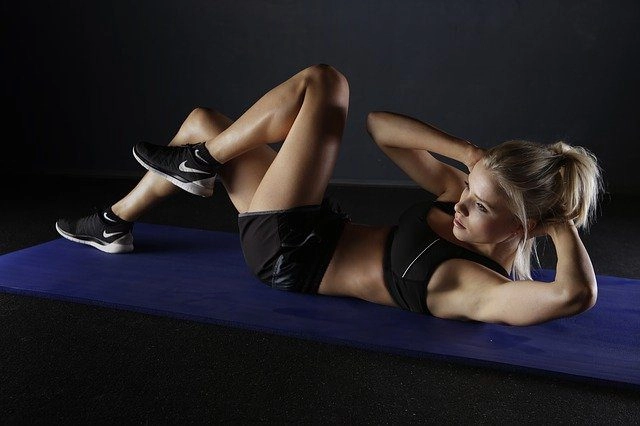
1. Exercise
Specific exercises can help scoliosis patients, whether children or adults, in a number of ways. Regular exercise can:
- Help relieve pain
- Improve mood and confidence
- Strengthen muscles that help keep the spine straight
- Prevent worsening spinal curvature
But, not all exercises are ideal for those with scoliosis. Here are some types of exercise that are considered safe and effective.
- Swimming – The weightlessness of water provides an ideal environment for the spine. Swimming is also a well-rounded exercise, helping develop the muscles of the entire body. But, too much of a good thing could be bad, so avoid competitive swimming.
- Running, Hiking, Walking – These activities help to keep you healthy and engaged. However, it’s probably best to avoid long-distance running, as it can cause compression of the spinal discs over time.
- Soccer – For children or adults with mild scoliosis, soccer is a good option. It’s especially good for kids to stay healthy, active, and learn to use their muscles.
- Rowing – Rowing helps strengthen the back muscles, which in turn help keep the spine straight.
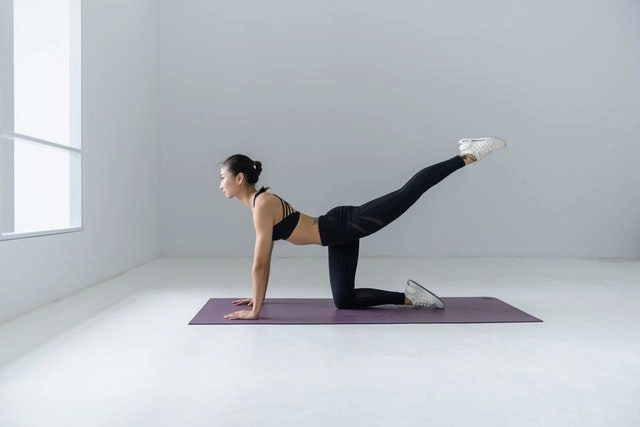
2. Yoga and Stretching
While yoga and stretching are both forms of exercise, it’s good for those with scoliosis to get into the habit of staying active and stretching for best results. Here are some yoga poses and stretches ideal for those with scoliosis.
- Plank
- Lay on your stomach on the ground.
- Prop your body up on your elbows and toes – keep the elbows under the shoulders and your palms flat on the ground in front of you.
- Keep the hips in line with the spine and don’t let them raise up or fall down by flexing the core muscles and the glutes (buttocks).
- Hold this position for as long as you can up to one minute.
- Repeat 3 to 5 times.
- Downward Dog
- Start in a plank position but on your hands instead of your elbows.
- From plank, lift your hips up and push them back as you bring your head down between your arms. Your body should create an inverted V shape.
- Push your chest back and lift your hips, feeling the stretch along the spine, the hamstrings, and the arms.
- Hold for 30 seconds then release back down to plank.
- Repeat 5 to 7 times.
Other exercises for scoliosis and hip realignment include:
- Cat and Cow
- Pelvic Tilts
- Squats
- Child’s Pose
- Mountain Pose
- Standing Reverse Leg Raises
- 90/90 Hip Stretch

3. Nutrition
Studies have shown that people who are generally healthier have more success with treating scoliosis than those who aren’t. Of course, nutrition is a very large part of anyone’s overall health. Here are some nutrition tips for those with scoliosis.
- Ideal food types for scoliosis include:
- Fresh fruits and vegetables every day.
- Probiotics like Greek yogurt, kombucha, and kefir.
- Plant-based foods that are high in fiber.
- Lean sources of protein such as salmon and eggs.
- Healthy fats, such as extra virgin olive oil, coconut oil, seeds, and nuts.
- Foods to avoid for scoliosis:
- Processed and refined carbs, like cakes, cookies, candy, and most snack foods.
- Fried foods or those containing trans-fats.
- Refined vegetable oils such as canola oil, palm oil, and soybean oil.
- Excess dairy products.
- Red meats.

4. Herbal Remedies and Supplements
Scientists and doctors are still trying to identify the causes of scoliosis. About 80% of scoliosis cases remain a mystery to doctors, meaning they don’t know the direct cause. However, recent evidence has shown that those who are diagnosed with scoliosis often have low levels of vitamins and hormones. Here’s a list of some herbs and supplements that have been shown to help with various aspects of scoliosis.
- Vitamin D – Specifically vitamin D3
- Omega-3, as found in fish oil.
- Turmeric Curcumin supplements – For inflammation.
- Magnesium – For muscle and bone health.
- Collagen – For strong joints.
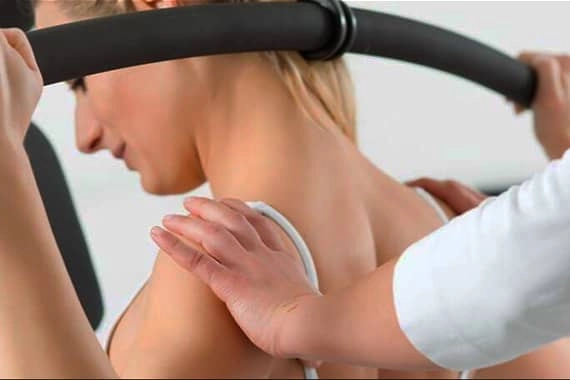
5. Physical Therapy or Chiropractor
Last but certainly not least on the list is physical therapy or chiropractic care. In particular, chiropractic care is effective in treating scoliosis. Physical therapy is also effective at helping with certain aspects of scoliosis treatment. Both types of treatment use similar tactics to help strengthen the muscles of the core and back, train the spine, and relieve pain.
The Difference Between Chiropractic Care and Physical Therapy
There are a few main differences between chiropractic care and physical therapy. Although each tailors its treatment plan to the individual, there are some general differences to consider when seeking treatment for scoliosis.
The main difference between the two is that doctors of chiropractic use chiropractic adjustment techniques to help straighten the spine directly. Physical therapists work on the spine indirectly, by focusing on the muscles that help the spine. To be clear, chiropractors also work on the spine indirectly by focusing on the muscles, in addition to spinal adjustments made with their hands or special instruments.
Physical therapy is often used after surgery or an injury, but it can also be used to help strengthen muscles, increase mobility, and decrease pain.
Luckily, you don’t have to choose between chiropractic care and physical therapy. Many places offer both modalities in one building. One great example of this is our chiropractic care and physical therapy in Juneau. Scoliosis patients can get the best of both worlds when they visit. Some of the services chiropractic offices offer for scoliosis include:
- Spinal Adjustments
- Chiropractic Massage
- X-Rays
- Ultrasound Therapy
- Laser Therapy
- Posture Analysis
- Lifestyle and Nutrition Tips
- Physical Therapy Stretches and Exercises
- Manual Manipulation
- Scoliosis-Specific Stretches and Exercises
- Pain Relief
- Inflammation Relief
- Step-by-Step Assessments of the Spine, Hips, and Back
5 Natural Fixes to Scoliosis: Conclusion
As you can see, there are plenty of natural options for scoliosis that should be considered before surgery. Of course, you should always talk to a medical professional before starting any of these techniques. A physician or doctor of chiropractic can help you determine the right approach to treating scoliosis. Much of the time, the treatment program will likely include all of the natural fixes above.
Whether you or your child have been diagnosed with scoliosis, don’t lose hope. You can beat it!
Resources:
https://www.sciencedirect.com/science/article/abs/pii/S1556370711000915
https://www.healthline.com/health/scoliosis/exercises-at-home#three-exercises
https://europepmc.org/article/med/8492060
https://www.sciencedirect.com/science/article/abs/pii/S1529943019311088


